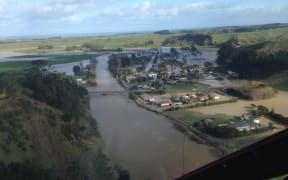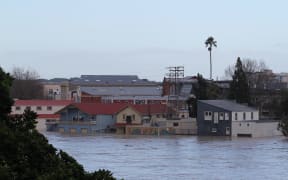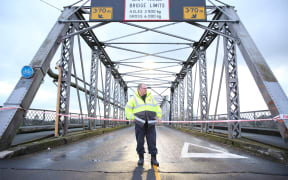The mayor of Whanganui says some homes will be uninhabitable for a long time and it is not yet known whether some will have to be condemned.
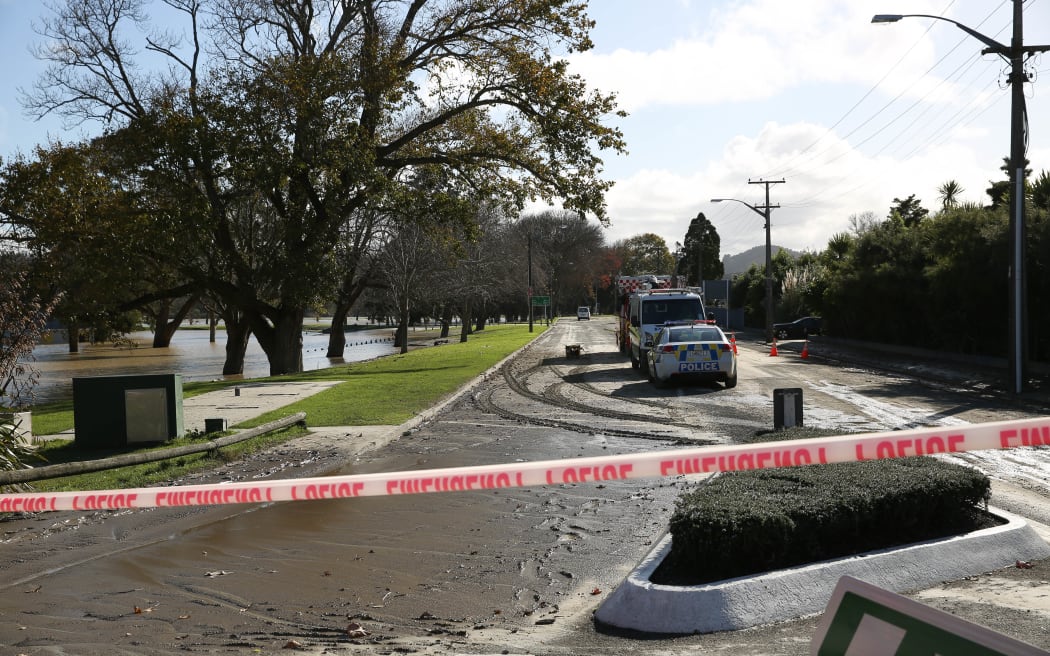
Anzac Parade in Whanganui on Monday. Photo: RNZ / Tom Furley
A state of local emergency remains in force in Whanganui and Taranaki.
The Manawatu-Whanganui Regional Council is using portable flood pumps to help clear remaining floodwaters throughout the region.
Regional controller Craig Grant said the priorities included assessing when ponding areas would drain and assigning flood pumps to key locations.
He said teams had also started a preliminary assessment of flood protection schemes and would fly over affected areas in Rangitikei, Pohangina-Oroua and Turakina schemes in particular.
Mr Grant said the Moutoa floodgates were closed at about 7pm yesterday.
Meanwhile Waitotara residents have been allowed to return to their homes and no houses remain underwater in the settlement.
Heath officers from the South Taranaki District Council are assessing homes and testing water supplies.
Civil Defence manager Rusty Ritchie said residents on bore water had been advised to boil water for the time being.
He said the streets have been cleared of silt and are passable and an information centre for residents remains open at the Waitotara Hotel.
About 400 people were still unable to return to their properties in Whanganui today, and more evacuations were expected in rural areas.
Annette Main told Morning Report that council inspectors would begin to assess the water damage to properties today.
She said some homes had about 2 metres of water through them and it was too soon to say whether some would have to be condemned.
Muddy streets were being cleared to allow four-wheel-drive vehicles and council crews to start assessing damage to properties in the flood-hit city.
Ms Main said water from the river had receded but there was deep mud on many streets.
Whanganui East's Anzac Parade, which is still caked in mud and silt, remains cordoned off by police.
Six roads in the city and at least 30 rural roads are still closed.
Mayor of South Taranaki Ross Dunlop said many roads in back-country
and hill-country areas had been ruined by flooding.
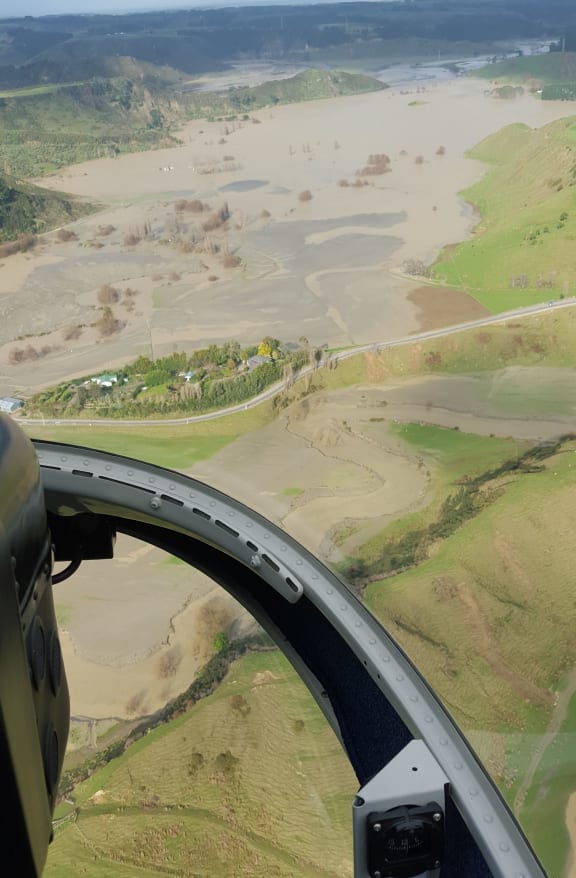
Aerial view of Waitotara Valley on Sunday. Photo: Taranaki Civil Defence
He told Morning Report the Waitotara Valley road, which is about 40 kms long, has up to 70 slips along it, with some of them 70 metres in length.
The flooding was not as high as the 2004 flood, he said, but some houses had been left uninhabitable.
Mr Dunlop said the council's ultrafast internet was down and it was working through the 3G network.

Okoki Valley yesterday. Photo: Taranaki Civil Defence
Civil Defence authorities are today flying in emergency supplies to about six families still cut off in isolated parts of Taranaki.
Yesterday four helicopters flew over isolated pockets of south eastern Taranaki, from State Highway 43 to Waitotara.
They landed and Civil Defence personnel spoke to about 30 households.
Civil Defence said most people were coping, but about six families with urgent needs would receive food, water, medication, baby food and necessities.
Yesterday the Government announced an initial contribution of a $250,000 to help local authorities with the clean up, and did not rule out further funding if it was needed.
Crews spent yesterday clearing streets of mud and contaminated water and the regional council said the focus today was on assessing housing, roading and other infrastructure, and continuing to try to make contact with people still cut off by flooding.
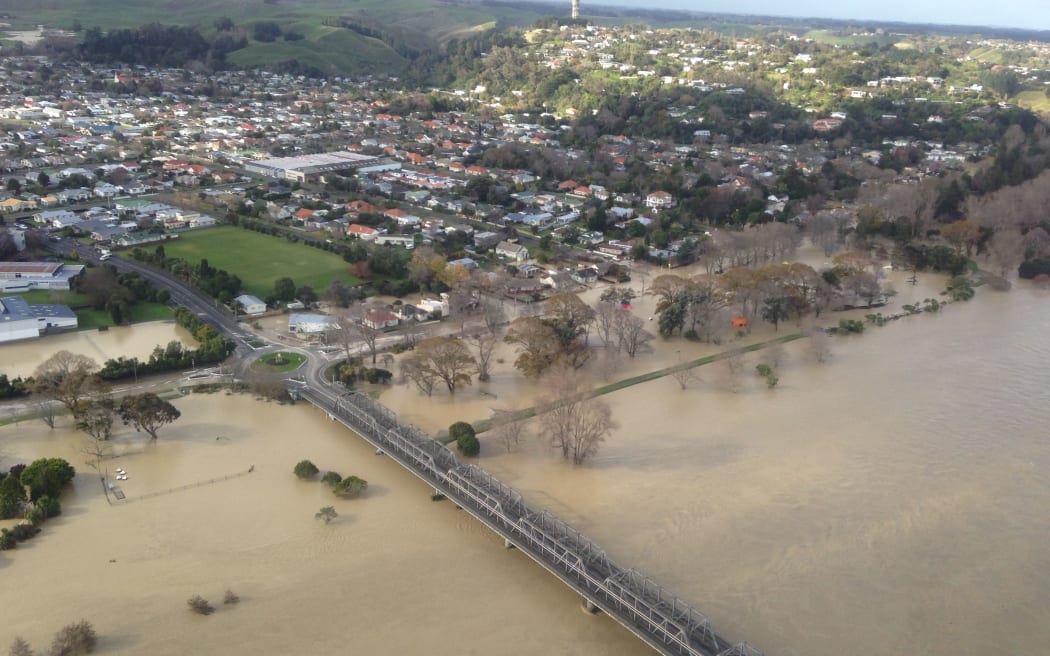
Photo: SUPPLIED
Ms Main said the priority today was to individually inspect affected houses to see whether residents could return home.
"It's just simply too hard to tell just from a visual look from outside. Some may have only had water up to their steps and some may have had a considerable amount of water inside."
The lines company Powerco said there were still about 420 households without electricity, down from about 6000 at the height of the storm.
Better weather forecast for today should help crews in their efforts to restore power, it said.
The company's acting network operations manager Dean Stevenson said crews had been unable to reach some properties because of road washouts, slips and fallen trees.
"Waitotara, Uruti, Strathmore and Whakamara are proving especially difficult to get to due to the significant damage caused by the floods."
The regional council said the response so far had been well coordinated and districts were working together to share resources.
Council group controller Craig Grant said water contamination was still a major problem in some areas.
Hunterville residents should boil water due to silt contamination and Marton residents needed to conserve water, he said.
There were a lot of people asking how they could help, but they should refrain from donating food and other supplies at this stage, Mr Grant said.
"A full needs assessment will be carried out to determine what's required and where these goods should be directed."
However, the Manawatu-Whanganui Regional Disaster Relief Fund Trust - set up after devastating floods in 2004 - was accepting donations of money, he said.
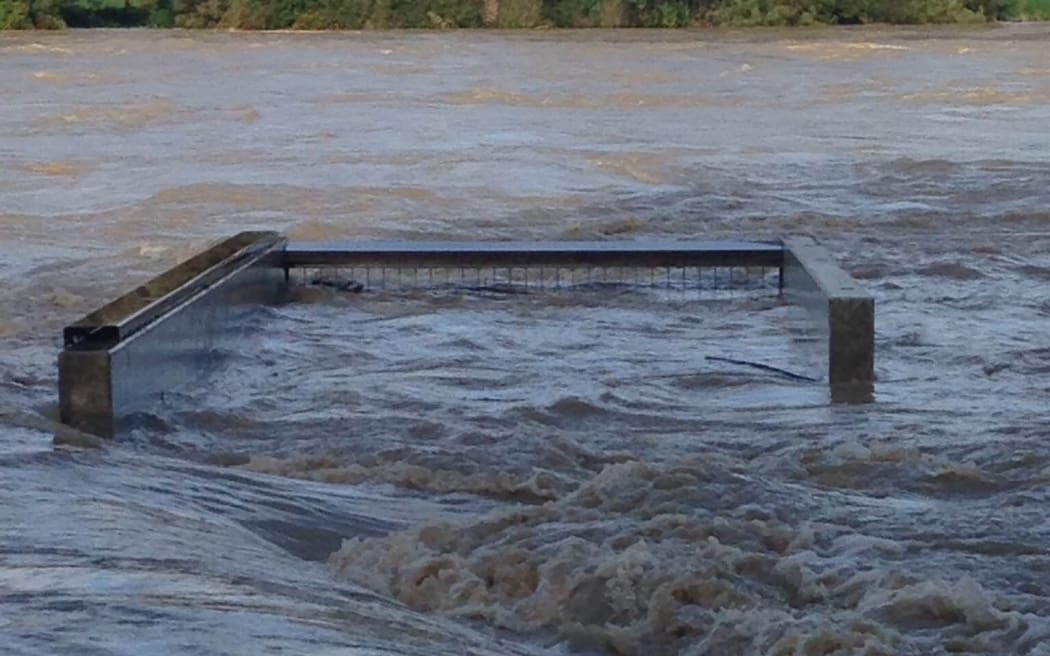
The flooded Manawatu River seen from Victoria Esplanade, Palmerston North. Photo: Supplied: Keren Dittmer
